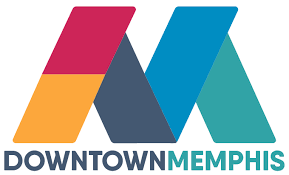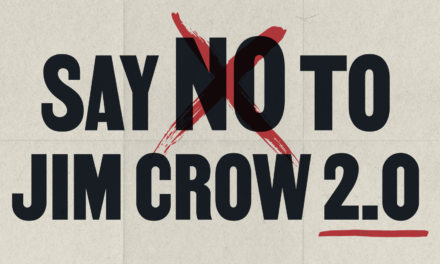
Six weeks ago, we wrote a blog post about the need to modernize the organizational structure of city government, and today we add an additional idea: creation of the City of Memphis Division of PLACE.
It should be a given that quality of place is a major factor in whether cities today are succeeding or failing, and bringing all of city government’s key quality of life assets into the same division could spark collaborations to bloom, new ideas to flow from renewed teamwork, and city investments to be leveraged for better returns.
The incoming Strickland Administration is now evaluating the potential reorganization of city government to make it more effective (hopefully, with greater sense of urgency and accountability). As a result, it seems an obvious time to assemble key quality of life amenities, attractions, and assets into the same division.
The Division of PLACE – parks, libraries, arts and culture, community centers, and environment.
Silo-Busting And Values
Bringing these services into a division where they can jointly plan for the future and find new ways in which they leverage each other’s programs should be incentive enough for the new division, but equally important, these services are seriously underfunded when compared to peer cities as more and more funds have been diverted to pay for the police department’s ceaseless call for more money.
Three years ago, we wrote about the need to bring alignment and a silo-busting culture to public works projects, and the sentiments expressed then apply equally to investments in quality of place:
“The city of Memphis needs two things to make this system work today. First, it needs to break down the silos and hierarchies that segment knowledge within the city and prevent the best possible outcomes from surfacing. Second, it needs a universal set of values that will govern decision-making throughout the system.
“Ultimately, city government should be reorganized geographically, with flexible teams in place to address the different needs of each distinct part of the city. This will help bring about a reorientation on neighborhoods and places instead of a focus on the individual division silos.”
City of Memphis is entering into an age of serious austerity, so there’s never been greater pressure for every department to get more and more out of its limited budgets. For example, what if parks, trails, community centers, libraries, and museums came together to jointly set priorities for various areas of Memphis and then conceive how they could together develop innovative programming out of shared space already in the neighborhood or better still, connect various public spaces and facilities that reimagine how they can serve and strengthen neighborhoods? Place As Economic Advantage
If city officials could see the value in pulling all economic development agencies under a single umbrella entity to create EDGE, the same principles apply to the City of Memphis investments in place. After all, in the end, quality of life and quality of place are in the long term, greater competitive advantages than waiving taxes for cities across the U.S.
In other words, a Division of PLACE would ultimately be investing in place for economic growth and competitiveness, which was the name of a research report issued in May, 2014, by the American Planning Association (APA). “Quality neighborhoods blending access, amenities, and affordability need to drive local economic development actions,” the report said. The report’s polling said the public supported neighborhood investments over recruiting companies as an economic development strategy by a nearly two-to-one margin.
“They increasingly value walkability, transportation options, and proximity to key resources and amenities, regardless of the type of neighborhood they prefer,” the report concluded, adding that polling indicated little difference between Boomers and Millennials.
Memphians are proud of their neighborhoods, whose numbers distinguish this city hometown from places like Nashville which is more of an amorphous place rather than stitched together from a group of distinctive, proud neighborhoods.
But Memphis’ pride needs to be converted into Memphis action. After all, it was in about 1998 that former Mayor Willie W. Herenton declared that his administration was ushering in the era of the neighborhood, but since then, even more neighborhoods have sunk into crisis and concentrated poverty.
Civic Commons
In addition, creation of the Division of PLACE would also give Memphis national prominence on the leading edge of an emerging movement called the “civic commons.”
Here’s how Carol Coletta, vice-president of national initiative for Knight Foundation, explains it: “These key facilities formed the backbone of any city’s ‘civic commons,’ a network of publicly financed and managed amenities to serve the broader, collective needs of local neighborhoods and to benefit the city as a whole.
“They provided much-needed public services, but also opportunities to foster neighborhood identities, cultural expression, learning, a sense of belonging, and serendipity and surprise. “Throughout history, the civic commons has made the city a city: It’s where we voted, where key decisions were made, we expressed our collective aspirations, and where we went to celebrate, learn, trade, play, and maybe just rest.
“Our city governments, schools, and communities are more fragmented and less inclusive than in days gone by. In many cases, in leisure, entertainment, and schools, we’ve enabled people to secede from the commons and get a different level and quality of service.
“ does it mean to us as a society when the all-embracing public places that once enabled our social capital stop being all-embracing? What does it mean when their use declines, and their users become a narrow niche of “consumers” versus a broad swath of citizens? What if, as a result, public support for these assets continues to erode? Does it mean that we the people will become more and more fragmented?
“Many of our civic assets have lost broad public support. They are underinvested, misaligned with today’s consumer interests, disconnected from one another, and saddled with out-of-date technology and legacy systems. They are too often serving niche audiences, abandoning their original power as our equal opportunity community institutions.
“Here we have this set of underperforming “sleepy” public assets, rich in possibility, but very low on the priority list of most mayors. We’re asking, “What would happen if we reimagined these civic assets as our new civic commons? Can we create new value and new opportunity for cities? Can we stir public imagination in this new civic commons such that it becomes a new priority for our cities?”
Advice About Place
Recently interviewed by Carol Coletta, Shawn McCaney, program director of creative communities at the William Penn Foundation, who has been a leader in reimagining Philadelphia’s civic commons, offered advice about reimagining the civic commons (or principles for a City of Memphis Division of PLACE):
1. Funders have helped create the problem of nonprofits working on good projects in isolation. We should create efficiency in public space investment in cities and reduce competition for resources by making it possible for leaders of projects to work together.
2. If you can reimagine neighborhood civic assets — parks, libraries, trails, schoolyards — as places that can attract people from throughout the city, you will have an asset better positioned for private funding and generating earned revenue.
3. Amenities shouldn’t be developed in isolation. They need to be connected to one another and to the rest of the city if we expect them to become the democratizing places they once were.
4. Connecting civic assets together in a civic commons makes collective advocacy for more public support possible. Today, they are engaging the city one at a time, but as a group, they can be a real force for advocating for public support.
5. The public sector will always play a key role in supporting civic assets, continuing to support them financially, but also with policy to ensure that they remain public assets that are
No Time Like The Present
In so many ways, today, every day, the residents of Memphis’ urban neighborhoods receive the message that they do not matter to the city in which they live. While there is much to be done, a City of Memphis Division of PLACE would send the unmistakable signal that things are going to change and that key public assets can be leveraged for fundamental change and become forces for reinvestment, reimagination, and growth.
In the end, what makes a place is not just the loyalty of the people who live there, but the vibrancy of its present and the promise of its future. There is always the risk that the focus on place becomes the latest buzzword that rings hollow because it is dragged down by commitment to the rhetoric but undermined by a lack of action to its purpose.
It is irony of our time that in the midst of the globalization of our commerce and culture, more and more, place matters despite all predictions to the contrary. Because of it, Memphis has to be thinking deeply about quality of place, how to strengthen it, how to renew it, and how to make it the foundation for a growth plan for the future.
All this is to say that there is no time like the present for Memphis to focus obsessively on place. It could begin within city government with the organization of a division that unrelentingly focuses on how to leverage public assets for greater impact to create healthy, better neighborhoods.





Honestly Tom. This article about place makes no reslsense. I’m not sure what the point is here. Surely we don’t need another city dept about place ver need a new mayor who will clean up the do nothing lazy city bureaucracy of Memphis. Enough of these pie in the sky ideas let’s get to work on real issues, not fluff.
charette anybody?
Anonymous: It’s not another city department. It’s renaming an existing city division, say, Parks and Neighborhoods, and assembling all quality of life into one place to accomplish neighborhood improvements. This isn’t fluff – as long as neighborhoods remain in dire need, it means that new revenues will come from raising taxes rather than from increased value of property.
This is a “growing the business” strategy, and that’s about as basic as it gets.
We need a thorough house cleaning of all city government depts, not just a superficial reorganizing and renaming of the current depts. Memphis is in very serious trouble and these types of proposals offer little in the way of solid change!
Kelly, aka anonymous: Why would this prevent a thorough house cleaning since it’s a major change in the city organizational structure and would lead to higher standards and ambitions out of these department leaders?
I generally like of idea of a more ‘civic’ oriented city — one where the public spaces are integrated service providers. But a ‘fruit-basket-turnover’ approach is rarely a good one. Breaking down the old silos always sounds like a great idea but it usually just destroys management and work teams.
I had the misfortune of being part of such an experiment at the University of Memphis. We decided to get rid the departments in the b-school so we could offer a integrated, cohesive business school curriculum, instead of the strong emphasis on specific silo disciplines like economics, finance, marketing. The result was not good. People wanted to be assigned to jobs with other people with similar tasks. People wanted bosses who represented their interests. Even worse, the bosses no longer really had the foggiest notion of what the people they were supervising did for a living. What a mess! After 6-7 years, we re-invented the old silos, the old management hierarchy, and the old curriculum. Of course, we called it yet another innovation. The only good news was that a couple of Deans made their careers out of all these changes. The students did not notice any improvements in their education at all. The faculty survived by leaving or by ignoring everything as they went about their daily work chores.
As a former Secretary for Public Services and Neighborhoods and as current President of the Coliseum Coalition, I agree and support what Tom is basically saying here. A sense of place is what lowers crime and poverty, not the quick fix of more police on the streets. A department of Culture (or “Place” as Tom puts it), demands personal involvement in your community. It’s the proper meaning of the word “citizen”. If you are personally involved, then you see how the government is spending your money. Regarding Memphis specifically, If you don’t know where you live, you can bet someone in Japan or Europe who’s up on their music history would be glad to tell you (likely down to the square foot). A book by Robert R. Archibald called “The New Town Square” beautifully furthers this point about sense of place. Thanks Tom. http://www.amazon.com/The-New-Town-Square-Communities/dp/0759102880